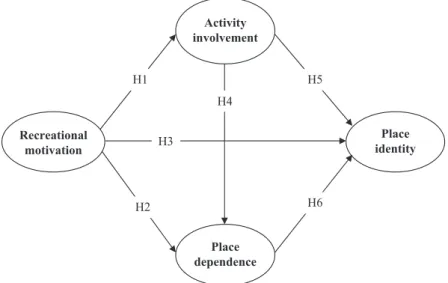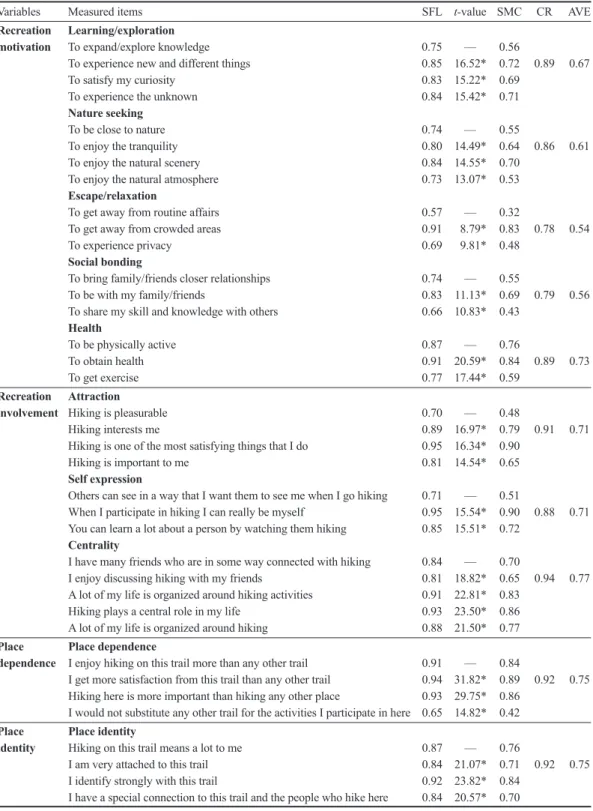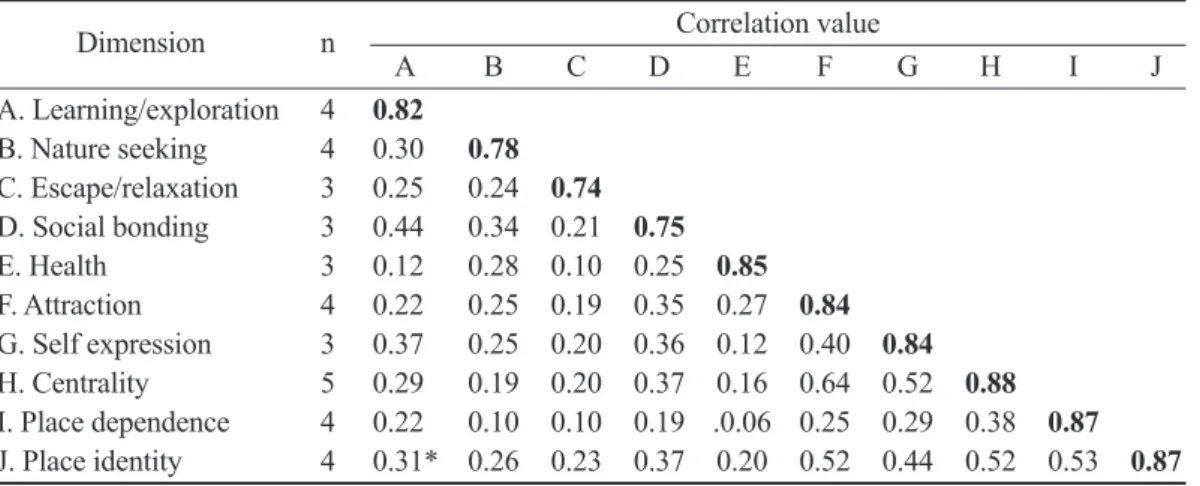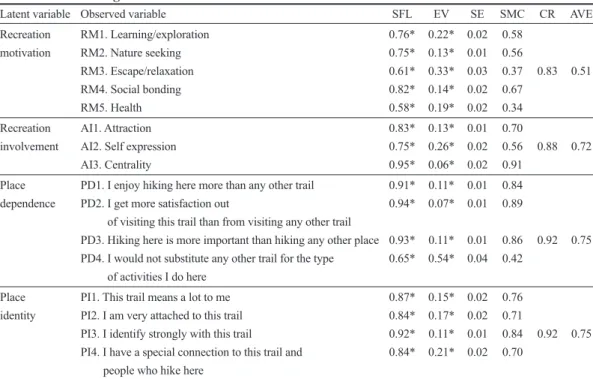Evaluation of Recreation Motivation and Activity Involvement in Affecting Place Attachment by Hikers
Yu-Jen Chiang, 1) Dar-Hsiung Wang 2,3)
【 Summary】
Owing to the rich forest resources in mountain areas, there are various popular hiking activi- ties in Taiwan. Determining how to provide suitable trails for hikers has become a noteworthy issue. The effects of recreation motivation and of activity involvement on place attachment were verified in several previous empirical studies. However, relationships among them have not yet been simultaneously examined. Therefore, the purpose of this study was to investigate relation- ships among hikers’ recreation motivation, activity involvement, and place attachment (comprised of place dependence and place identity). We conducted a questionnaire survey and selected hik- ers on the trail of Guanzihling Dadong Mt. in Tainan City as sampling subjects. In total, 364 valid questionnaires were obtained. Statistical software of structural equation modeling Amos 18 was used to perform a confirmatory factor analysis to estimate parameters of the model, identify the relationship of the overall model, and test the fitness. Results showed that activity involvement was a stronger predictor of the 2 dimensions (place dependence and place identity) of place attachment compared to that of recreation motivation. In terms of the overall model, recreation motivation, activity involvement, and place dependence were all antecedents that had an effect on place iden- tity. Additionally, activity involvement played a mediating role between recreation motivation and place attachment (both dimensions of place dependence and place identity).
Key words: hiking, recreation motivation, activity involvement, place attachment.
Chiang YJ, Wang DH. 2016. Evaluation of recreation motivation and activity involvement in affect- ing place attachment by hikers. Taiwan J For Sci 31(1):1-17.
1)
Department of Cultural Resources and Leisure Industries, National Taitung Univ., 369, Sec. 2, University Rd., Taitung 95092, Taiwan. 國立臺東大學文化資源與休閒產業學系,95092臺東市大學 路二段369號。
2)
Division of Forest Management, Taiwan Forestry Research Institute, 53 Nanhai Rd., Taipei 10066, Taiwan. 林業試驗所森林經營組,10066台北市南海路53號。
3)
Corresponding author, e-mail:dhwang@tfri.gov.tw 通訊作者。
Received March 2015, Accepted August 2015. 2015年3月送審 2015年8月通過。
研究報告
登山健行者遊憩動機與活動涉入對地方依附影響之研究




